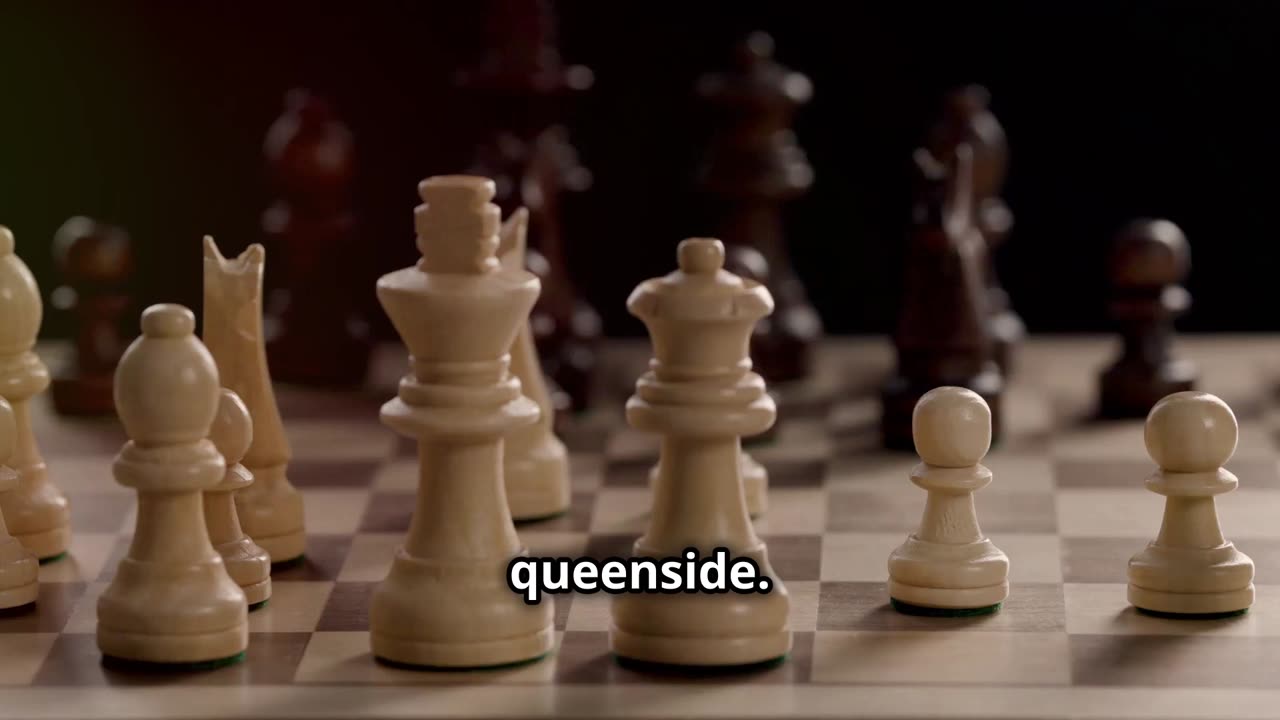Premium Only Content

Master the Benko Gambit: Aggressive Chess Opening for Black!
Unlock the secrets of the Benko Gambit, a formidable weapon for aggressive chess players! In this video, we dive deep into the key moves and strategies to master this daring opening.
Learn the art of pawn sacrifices and optimal piece development to seize early initiative. We'll emphasize the importance of patience and applying long-term pressure on your opponent rather than seeking immediate gains. Elevate your chess game with these powerful techniques!
The Benko Gambit is an aggressive opening choice for Black that arises after 1.d4 Nf6 2.c4 c5 3.d5 b5. Black sacrifices a pawn early on to gain long-term pressure on the queenside, especially on the open a- and b-files. Here’s a breakdown of how to play it effectively:
1. Basic Move Order
The classic Benko Gambit opening sequence:
1.d4 Nf6
2.c4 c5
3.d5 b5
After this sequence, White has several responses, but the main idea for Black is to let White capture on b5, allowing Black to apply pressure on the queenside.
2. Understanding the Key Ideas in the Benko Gambit
Queenside Pressure: Black sacrifices a pawn to open up the a- and b-files, aiming to control these files with rooks. This pressure makes it challenging for White to develop and hold onto their queenside pawns.
Long-Term Activity: In the Benko Gambit, Black aims to keep their pieces active, often placing the dark-squared bishop on g7, which exerts influence along the long diagonal (b2 to g7).
Piece Coordination: Black’s rooks on the a- and b-files and knights on c5 and f6 (or later on d7) coordinate to create threats on the queenside, especially against White’s pawns on b2 and a2.
3. Common Continuations
White has a few main options, with two popular ones being:
a) Accepting the Gambit: 4.cxb5 a6 5.bxa6 Bxa6
4.cxb5 a6: Black pushes the a-pawn, tempting White to capture again.
5.bxa6 Bxa6: Black develops the bishop actively, putting pressure on the b-file and opening the long diagonal for later piece activity.
From here, Black typically aims to:
Castle kingside, placing the bishop on g7.
Develop the knight to f6 and often bring the other knight to d7.
Place the rooks on the a- and b-files, using them to pressure White's queenside.
b) Declining the Gambit: 4.Nf3
In this line, White avoids taking on b5, hoping to maintain a pawn structure without the gambit. Black can still play actively by pushing 5.a6, maintaining the queenside tension, and preparing to fianchetto the dark-squared bishop.
4. Key Positional and Tactical Patterns
Understanding a few common patterns will help you play the Benko Gambit better:
Pressure on the b2 and a2 Pawns: After Black's rooks occupy the a- and b-files, these pawns can become weaknesses for White. Black can maneuver knights and bishops to add more pressure on them.
Minor Piece Activity: Black’s knights often find good squares on c5 and f6 (sometimes d7 and g4, if White leaves open opportunities), supporting the queenside control.
Weakening of White's Center: White's attempts to hold the extra pawn can sometimes lead to weakened central control, especially around the squares e4 and d5.
5. Key Squares and Ideal Piece Placements for Black
Rooks on a8 and b8: These rooks exert direct pressure down the open files.
Bishop on g7: The dark-squared bishop controls the long diagonal and often pins White’s queenside pawns to their minor pieces.
Knights on c5 and f6: Both knights can become active in attacking White’s queenside or central squares.
6. Sample Game in the Benko Gambit
Here’s a quick look at how an ideal Benko Gambit might play out:
-
 34:12
34:12
inspirePlay
1 day ago $5.84 earned🏆 The Grid Championship 2024 – Cass Meyer vs. Kelly Rudney | Epic Battle for Long Drive Glory!
92.6K8 -
 17:50
17:50
BlackDiamondGunsandGear
17 hours ago $3.17 earnedTeach Me How to Build an AR-15
66.4K6 -
 9:11
9:11
Space Ice
1 day agoFatman - Greatest Santa Claus Fighting Hitmen Movie Of Mel Gibson's Career - Best Movie Ever
123K49 -
 42:38
42:38
Brewzle
1 day agoI Spent Too Much Money Bourbon Hunting In Kentucky
83.6K13 -
 1:15:30
1:15:30
World Nomac
1 day agoMY FIRST DAY BACK in Manila Philippines 🇵🇭
65K10 -
 13:19
13:19
Dr David Jockers
1 day ago $12.03 earned5 Dangerous Food Ingredients That Drive Inflammation
83.4K17 -
 1:05:13
1:05:13
FamilyFriendlyGaming
1 day ago $16.00 earnedCat Quest III Episode 8
132K3 -
 10:39
10:39
Cooking with Gruel
2 days agoMastering a Succulent London Broil
84.9K5 -
 22:15
22:15
barstoolsports
1 day agoWhite Elephant Sends Barstool Office into Chaos | VIVA TV
59.9K1 -
 3:30:40
3:30:40
MrNellyGB
23 hours ago🔴LIVE - GRINDING MARVEL RIVALS RANKED! | #RumbleTakeover #RumblePremium
41.2K1